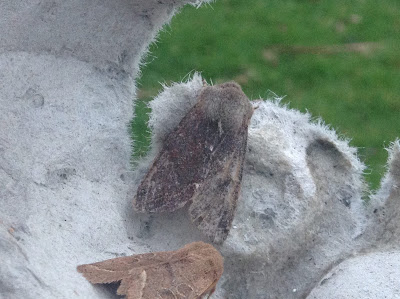Lots of Spring things in the natural world are early this year, not by more than a fortnight but that can be enough to cause problems. Here are the battered remains of a male Emperor moth, a great grandchild of the magnificent empress which visited me in May 2014 and gave me a clutch of eggs which started an enormous dynasty.
This chap emerged unexpectedly early from one of a batch of cocoons woven last year by caterpillars in the care of very nice neighbours. Alas, his promptness meant that he was confined and his emergence unexpected. RIP. A close watch is now being kept on the others.
More happily, another neighbour who lives in a narrowboat on the Oxford Canal has enterprisingly reared Silk Moths from a batch of eggs supplied to her by a naturalist firm at Christmas. I have to admit that I was dubious about the chances of the tiny caterpillars which soon emerged, given that their foodstuff was a sort of concentrated leaf extract and their home in a boat which, though very snug, had all the high dependency on curious heaters common among those who live afloat.
I am glad to say that she has triumphed and here are some of the moths, above and below. They are emerging at the rate of four or five a day and their guardian is hoping that they will breed in turn, just as my Emperor moths have done for three generations. In which case, she has promised to give some to me. This may involve the further experiment of freezing the eggs until the time is nearer when I can carry out regular harvests from Oxford's mulberry trees.
What of the silk, meanwhile, which was the original incentive for my friend who is more of a textile enthusiast than an entomologist - though her interest in the latter study is increasing by the day? In spite of the number of cocoons, we are not talking (yet) of the sort of quantities which could make up silk pyjamas or even a hanky. But one of our fellow members of the local Knit and Natter brightly suggested the other night: "What about floss?" I will keep you informed.



















